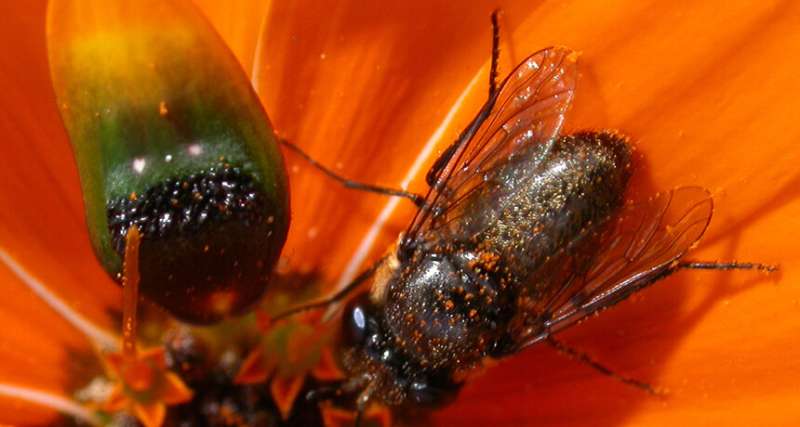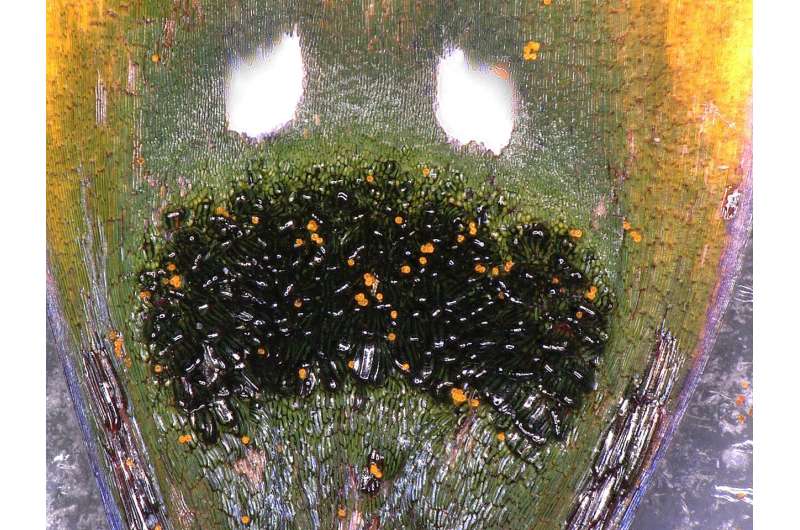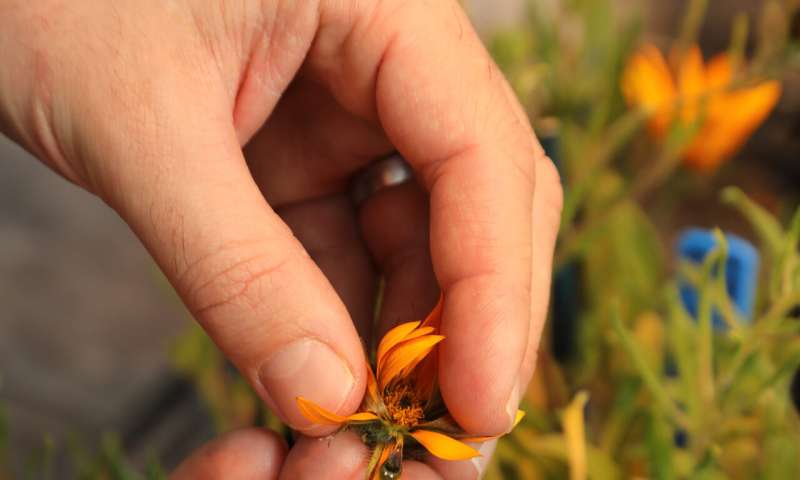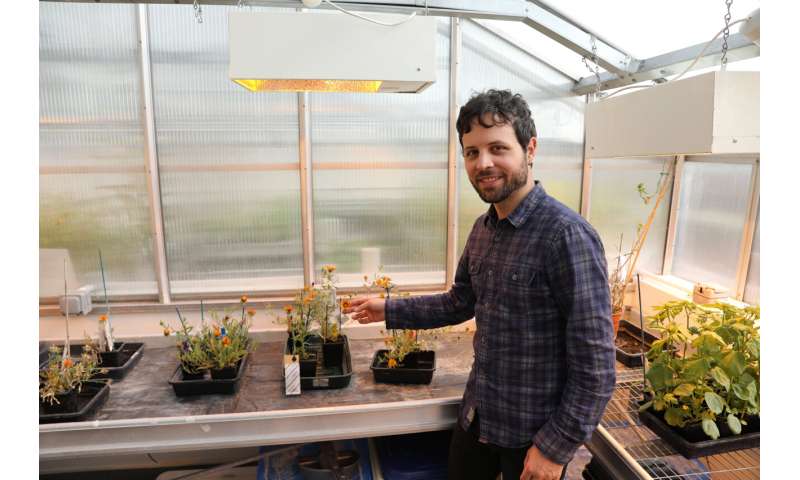This article has been reviewed according to Science X's editorial process and policies. Editors have highlighted the following attributes while ensuring the content's credibility:
fact-checked
peer-reviewed publication
trusted source
proofread
Deceptive daisy's ability to create fake flies explained

A male fly approaches a flower, lands on top of what he thinks is a female fly, and jiggles around. He's trying to mate, but it isn't quite working. He has another go. Eventually he gives up and buzzes off, unsuccessful. The plant, meanwhile, has got what it wanted: pollen.
A South African daisy, Gorteria diffusa, is the only daisy known to make such a complicated structure resembling a female fly on its petals. The mechanism behind this convincing three-dimensional deception, complete with hairy bumps and white highlights, has intrigued scientists for decades.
Now researchers have identified three sets of genes involved in building the fake fly on the daisy's petals. The big surprise is that all three sets already have other functions in the plant: one moves iron around, one makes root hairs grow, and one controls when flowers are made.
The study found that the three sets of genes have been brought together in the daisy petals in a new way to build fake lady flies. The "iron moving" genes add iron to the petal's normally reddish-purple pigments, changing the color to a more fly-like blue-green. The root hair genes make hairs expand on the petal to give texture. And the third set of genes make the fake flies appear in apparently random positions on the petals.
"This daisy didn't evolve a new 'make a fly' gene. Instead it did something even cleverer—it brought together existing genes, which already do other things in different parts of the plant, to make a complicated spot on the petals that deceives male flies," said Professor Beverley Glover in the University of Cambridge's Department of Plant Sciences and Director of the University's Botanic Garden, senior author of the study.
The researchers say the daisy's petals give it an evolutionary advantage, by attracting more male flies to pollinate it. The plants grow in a harsh desert environment in South Africa, with only a short rainy season in which to produce flowers, get pollinated, and set seed before they die. This creates intense competition to attract pollinators—and the petals with fake lady flies make the South African daisy stand out from the crowd.
The results are published today in the journal Current Biology.

Compared to most living organisms, the group of plants including the sexually deceptive daisy is very young in evolutionary terms at 1.5 to 2 million years old. The earliest daisies of this family tree didn't have the fake fly spots, which means they must have appeared on the daisy petals very rapidly.
"We'd expect that something as complex as a fake fly would take a long time to evolve, involving lots of genes and lots of mutations. But actually by bringing together three existing sets of genes it has happened much more quickly," said Dr. Roman Kellenberger, a postdoctoral researcher in the University of Cambridge's Department of Plant Sciences and first author of the study.
To get their results, the researchers compared which genes were switched on in petals with, and without fake flies in the same type of daisy plant. They also compared these to petals from a different type of daisy that produces a simple spot pattern, to work out which genes were specifically involved in making the daisy's spots so deceptive.
-

Researcher shows the fake lady fly. Credit: Jacqueline Garget/University of Cambridge -

Researcher Roman Kellenberger with South African daisies grown in Cambridge. Credit: Jacqueline Garget/University of Cambridge
This is the only example of a flower that produces multiple fake flies on top of its petals. Other members of the daisy family make much simpler spots—for example spots in a ring around all the petals—that aren't very convincing to real flies. By comparing the different daisies in the family tree, the researchers were able to work out the order that the fake flies came into being: color first, then random positioning, then texture.
"It's almost like evolving a whole new organ in a very short time-frame. Male flies don't stay long on flowers with simple spots, but they're so convinced by these fake flies that they spend extra time trying to mate, and rub off more pollen onto the flower—helping to pollinate it," said Kellenberger.
More information: Beverley J. Glover, Multiple gene co-options underlie the rapid evolution of sexually deceptive flowers in Gorteria diffusa, Current Biology (2023). DOI: 10.1016/j.cub.2023.03.003. www.cell.com/current-biology/f … 0960-9822(23)00270-1
Journal information: Current Biology
Provided by University of Cambridge




















